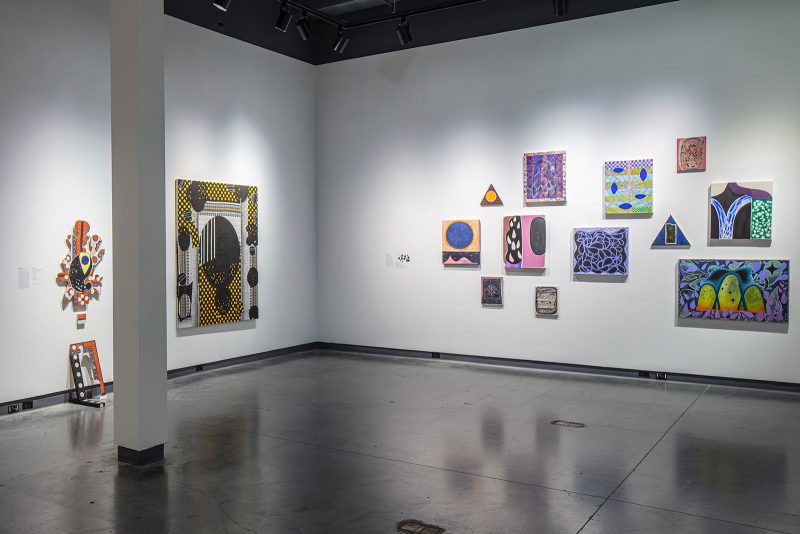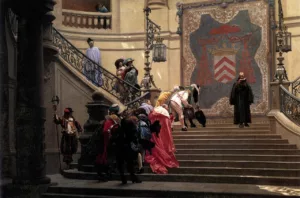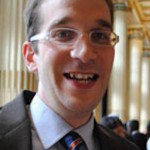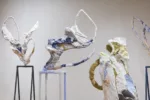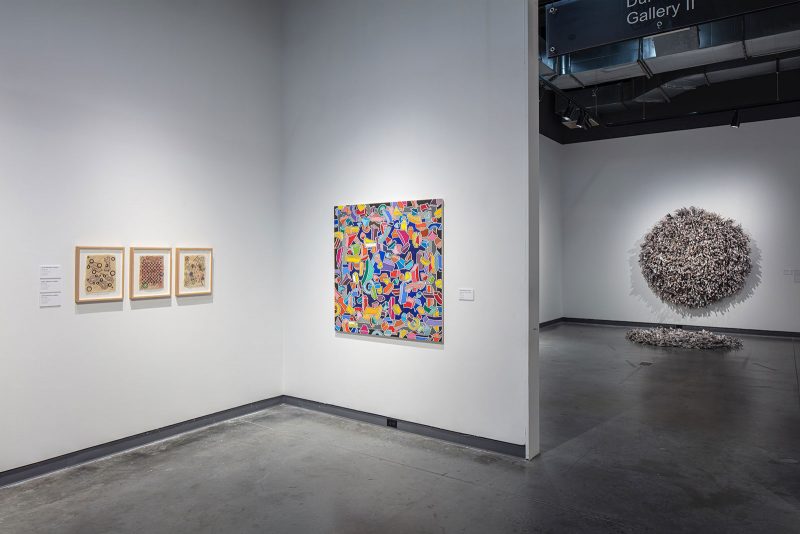
Fields and Formations was planned to coincide with the centennial year of the 19th Amendment which granted women the right to vote. Given the particularly fraught moment we are facing now regarding two separate but related and relevant issues, voting rights and control of women’s bodies and those with a uterus, this exhibition is an especially important statement about the creativity and commitment of women and non-binary artists. The Delaware Contemporary fully supports the project, presenting the work of 12 women and non-binary artists with 70 works that fill three large galleries and part of the lobby.
Curator Kristen Hileman chose artists from the Mid-Atlantic region, supporting the Delaware Contemporary’s desire to focus closer to home and communities within driving distance of the institution. The artists in this exhibition have largely developed their careers in a region bounded by Philadelphia to the north and Washington, DC to the south. Hileman expresses her gratitude to the DC, especially its director, Leslie Shaffer, for supporting art that does not necessarily follow trends or come from urban centers. I admit, this is a particularly important and long-standing issue for me as a curator and teacher—recognizing that great artists live outside of NYC and a few other major urban areas. Moreover, many of these artists who live in the imagined “backwaters” are women, non-binary, and of diverse identities and races. However, their geographic location offers an opportunity to be self-sufficient and to produce work of stunning originality.
Happily, Fields and Formations presents artists of different generations. Perhaps we have entered a period where the work of older artists, particularly that of women and non-binary artists, are gaining respect. The span in age here is five decades. We see artists who are emerging (by comparison), mid-career, and firmly established. What they share, across different materials, scale, and styles, is what Hileman describes as “affective abstraction,” where artists utilize the elements of design (color, texture, line, shape, volume and more) to create personal artwork that provokes responses beyond our eyes. In all cases, a material transformation takes place. Paper is cut, molded and shaped, as are yoga mats; layers of paint and other materials cover supports. Fabric is transformed into alternative structures.
Hileman rightly points out that painter Alma Thomas and sculptor Anne Truitt began this conversation of seeing the possibility for abstraction to be both physically solid and personally expressive. Art historian, Jennie Hirsh traces the history of abstraction that deviated from Minimalism, including the works of Louise Bourgeois and Eva Hesse, among others. In her catalog essay, she sets the historical context for “Fields and Formations,” seeing the artists in this show as being of their own time and place, yet firmly linked to an earlier period when there were artists whose work did not fit within the then dominant Minimalist narrative.
Paper transformation plays an essential role in many of the works included in “Fields and Formations.” Jae Ko presents a large, site-specific installation, “Flow,” in the industrial lobby space of the Delaware Contemporary. She has installed variations of this work and other similar pieces at several different venues. Comprised of recycled rolled paper, the result is an intricate design that alludes to waves and clouds. It suggests the power and majesty found in images of the Grand Canyon and Niagara Falls by 19th century painters, while simultaneously appearing ethereal. It also references the well-known woodblock print, “The Great Wave” by Hokusai. Ko’s successful balancing between movement and stillness and delicacy and strength produces a work of great power and demonstrates the ability of artists to not only transform materials but for art to be transformative too, changing people’s lives.
In addition to Ko, several other artists also employ everyday materials to produce abstract, complicated, and graceful works. Maren Hassinger contributes a two-part sculpture that she has installed in variation at other venues before too. “Wrenching News” demonstrates her background in both fiber arts and dance. The piece is two Mandalas, one on the wall and the other on the floor, created for the artist by staff and volunteers of the DC over the summer of 2021. Shredded, twisted, and wrapped newspaper strips from the New York Times bring the latest news of the real world, good and bad, into the gallery. Hassinger is one of the most well-known artists in the show, especially recognized for her performances and sculptures, with works in numerous museum collections.
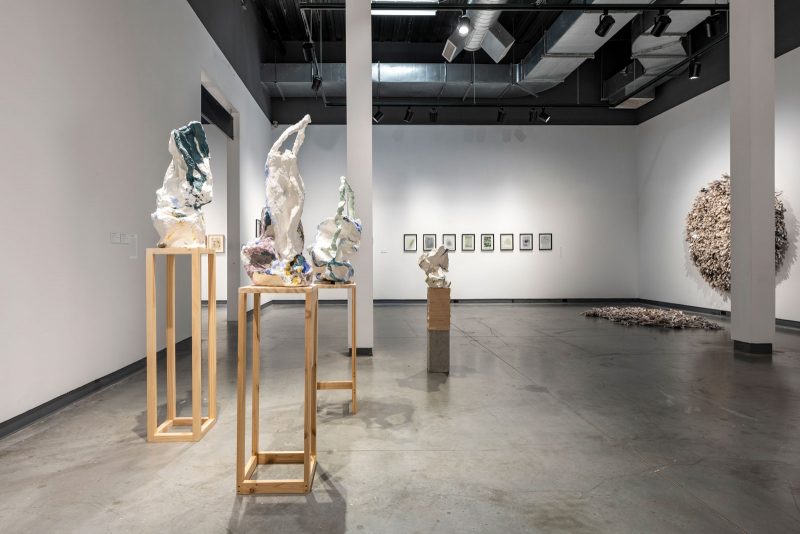
Alexis Granwell employs paper maché, handmade paper, linen pulp, paint and custom stands of unpainted wood and cement blocks, resulting in sculptures that can be described as statuary. They are presented here in a grouping that links Granwell to the past, transforming not only materials, but also reimagining the history of art. For instance, the sculptures recall the white classical figures from the Acropolis and even the Nike of Samothrace, and simultaneously Brancusi’s studio full of his crafted stands and carved pieces. They are also painted in an expressive manner that looks to modernist abstraction of the 1950s and 60s The artist’s unique art historical summations are reinventions that operate entirely in the present day.
linn meyers presents both drawings on graph paper and cut paper compositions made from found book pages. An artist whose works are defined by their precision, whether in drawing or painting, Meyers produces elegant, exacting abstract designs that reveal the artist’s hand. Her marks are controlled and specific, referring to maps and scientific diagrams. They operate on a minute scale, but also at times have materialized into large installations. Quite differently, Arden Bendler Browning is inspired by landscape. When working on paper, she layers acrylic ink and spray paint on paper collaged on board. The imagery ranges from the abstract to the non-objective, with elements of nature varying from the visible to the concealed, resulting in mysterious environments. In some of her works Maggie Michael looks to nature for inspiration, creating mixed media suggestions of wind and water.
Jo Smail, another extremely well-known artist with a decades-long career, is represented by several complex works created with acrylic and fabric on canvas or board. Her abstractions are often autobiographical with references to her homeland, South Africa, and various life events from a studio fire to a stroke. Early in her career she came under the influence of American Color Field painting, and she remains fascinated by color and shape. Her works prove that abstraction can have content. Smail moved to Maryland to teach in 1985, and her impact on artists there has been important.
Several artists work with materials outside of painting that allude to the handmade, including Alex Ebstein and Jesse Harrod. The separation that traditionally divides Craft and Fine Art is thankfully completely ignored by these artists as well as the curator. Ebstein creates odes to modernism with yoga mats, which she cuts and fits like puzzle pieces, incorporating variously embroidery floss and acrylic enamel paint. The works are whimsical and a personal approach to the hierarchy of Modernism with a capital “M.”
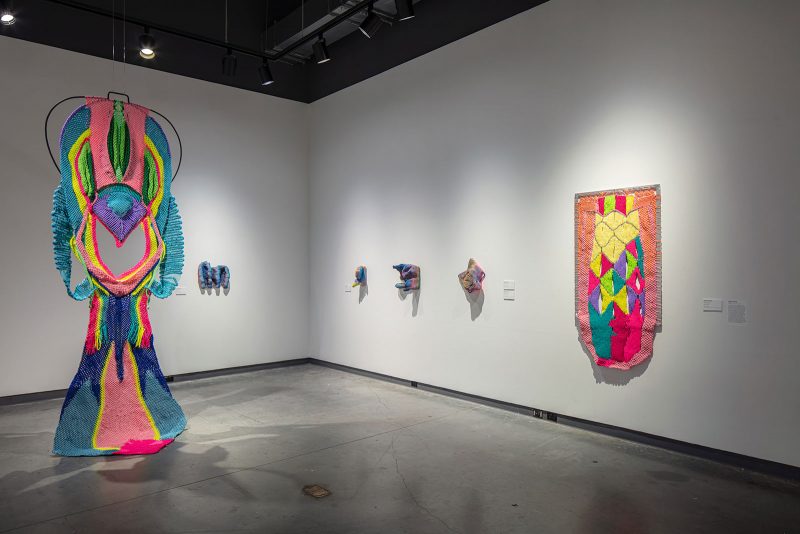
Harrod’s brightly colored three-dimensional sculptures from cotton are identified on their website as macramé. The idea of knotting and off loom weaving of thread or string brings together the fiber sculpture of Lenore Tawney and the crafted plant hangers and wall decorations of the 1970s. Through Harrod’s work they explore sexual identity and gender. One of the agendas of feminist art of the later 1960s and 70s was to question the hierarchy of materials, the false belief that steel sculpture was more important than textiles.
Carol Brown Goldberg, also an established artist, here presents paintings in both acrylic on canvas and ink on paper. She has an expansive repertoire of works that bring together symbols and expanding patterns. Natessa Amin employs acrylic on canvas to explore her hybrid identity spanning India, Kenya, and the Pennsylvania Dutch. Linling Lu’s brightly colored circular paintings begin as digital studies but finalize as acrylic paintings that she organizes into large wall installations of vibrating colors.
Space prevents a more detailed exploration of Fields and Formations, but if for some reason you miss this important and visually enticing exhibition while it is on view at the Delaware Contemporary, you can catch it later at American University in Washington D.C. An illustrated catalog with essays by Curator Kristen Hileman and Art Historian Jennie Hirsch can be purchased online or in-person.
“Fields and Formations: A Group Exhibition Exploring Mid-Atlantic Abstraction,” September 3, 2021 – January 7, 2022, at The Delaware Contemporary. Organized by Curator-in-Residence Kristen Hileman. Featured Artists: Natessa Amin, Arden Bendler Browning, Carol Brown Goldberg, Alex Ebstein, Alexis Granwell, Jesse Harrod, Maren Hassinger, Jae Ko, Linling Lu, linn meyers, Maggie Michael, and Jo Smail. The show will next travel to the American University Museum in the spring of 2022.
